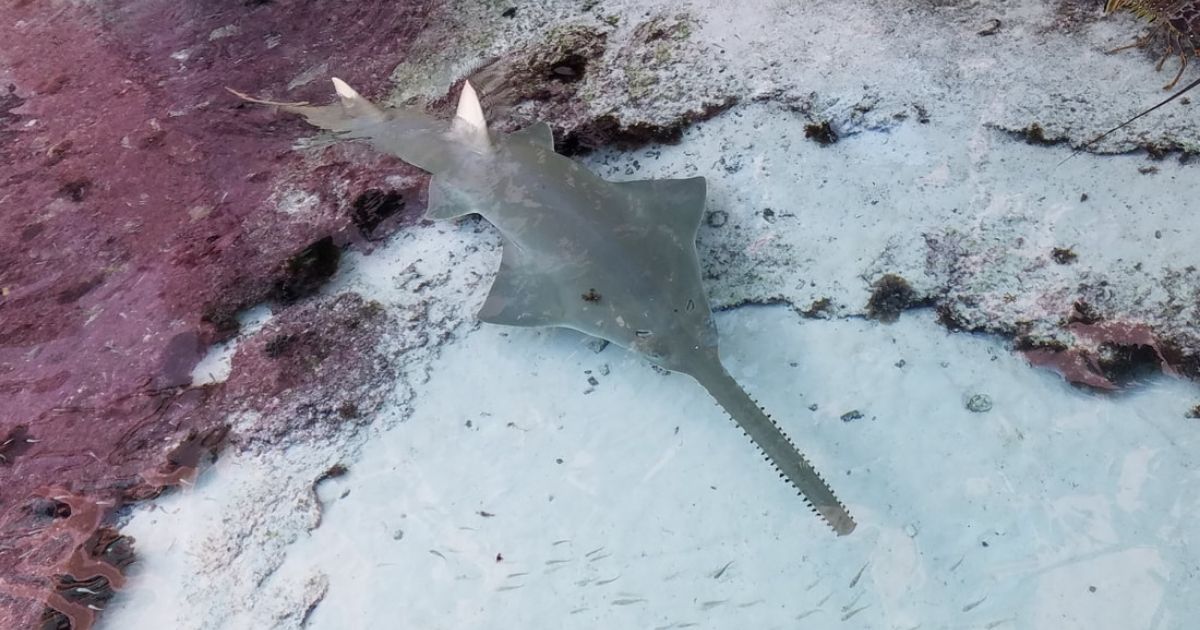Sawfish have disappeared from half of the world's coastal waters and the distinctive shark-like rays face complete extinction due to overfishing, according to a new study by Simon Fraser University researchers, published in Science Advances.
Sawfish, named after their unique long, narrow noses lined by teeth, called rostra, that resemble a sawblade, were once found along the coastlines of 90 countries but they are now among the world's most threatened family of marine fishes, presumed extinct from 46 of those nations. There are 18 countries where at least one species of sawfish is missing, and 28 more where two species have disappeared.
According to SFU researchers Helen Yan and Nick Dulvy, three of the five species of sawfish are critically endangered, according to the International Union for Conservation of Nature (IUCN) Red List of Threatened Species, and the other two are endangered.
Their teeth on their rostra are easily caught in fishing nets. Sawfish fins are among the most valuable in the global shark fin trade and rostra are also sold for novelty, medicine and as spurs for cockfighting.
The current presence of all sawfishes world-wide is unknown, but Dulvy warns complete extinction is possible if nothing is done to curb overfishing and to protect threatened habitats, such as mangroves, where sawfish can thrive.
"Through the plight of sawfish, we are documenting the first cases of a wide-ranging marine fish being driven to local extinction by overfishing," Dulvy says. "We've known for a while that the dramatic expansion of fishing is the primary threat to ocean biodiversity, but robust population assessment is difficult for low priority fishes whose catches have been poorly monitored over time. With this study, we tackle a fundamental challenge for tracking biodiversity change: discerning severe population declines from local extinction."
The study recommends that international conservation efforts focus on eight countries (Cuba, Tanzania, Columbia, Madagascar, Panama, Brazil, Mexico and Sri Lanka) where conservation efforts and adequate fishing protections could save the species. It also found Australia and the United States, where adequate protections already exist and some sawfish are still present, should be considered as "lifeboat" nations.
"While the situation is dire, we hope to offset the bad news by highlighting our informed identification of these priority nations with hope for saving sawfish in their waters," says Yan. "We also underscore our finding that it's actually still possible to restore sawfish to more than 70 per cent of their historical range, if we act now."
By Simon Fraser University
Journal Reference:
Helen F. Yan, Peter M. Kyne, Rima W. Jabado, Ruth H. Leeney, Lindsay N.K. Davidson, Danielle H. Derrick, Brittany Finucci, Robert P. Freckleton, Sonja V. Fordham, Nicholas K. Dulvy. Overfishing and habitat loss drive range contraction of iconic marine fishes to near extinction. Science Advances, 2021; 7 (7): eabb6026 DOI: 10.1126/sciadv.abb6026



